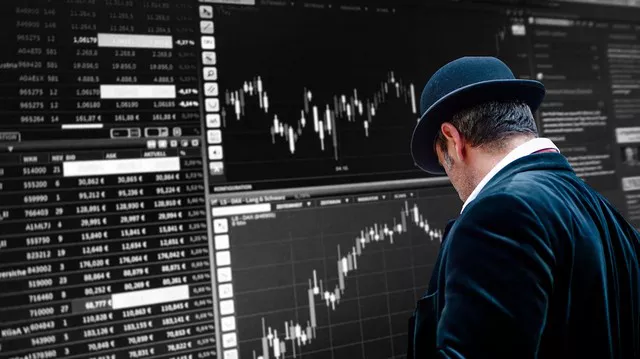Investors, analysts, and industry experts are often intrigued by the prospect of forecasting future commodity prices, including those of copper futures. While predicting the precise value of copper futures five years from now is inherently speculative, this article aims to provide insights into the factors influencing copper prices, potential scenarios for the future, and key considerations for investors navigating the copper market.
Understanding the Dynamics of Copper Futures
Copper, known as “Dr. Copper” for its ability to forecast economic trends, is a vital industrial metal with diverse applications in construction, electronics, and renewable energy. As a globally traded commodity, copper prices are influenced by a complex interplay of supply and demand dynamics, economic indicators, geopolitical events, and technological developments.
Factors Influencing Copper Prices
Supply and Demand Balance: The fundamental principle of supply and demand is a primary driver of copper prices. Changes in global copper production, mine supply disruptions, and shifts in demand from key consuming industries impact the supply-demand balance and influence price trends.
Economic Growth and Industrial Activity: Copper demand is closely tied to economic growth and industrial activity. Strong GDP growth, infrastructure development, and construction projects drive demand for copper in emerging and developed economies alike, while economic downturns and recessions can lead to decreased demand.
Technological Advancements: Technological innovations and advancements in industries such as electronics, telecommunications, and renewable energy can affect copper demand. The transition towards electric vehicles, renewable energy generation, and smart infrastructure presents opportunities for increased copper consumption.
Global Trade and Geopolitical Events: Trade policies, tariffs, and geopolitical tensions can impact copper prices by affecting global trade flows, supply chains, and market sentiment. Geopolitical events, such as trade disputes, political unrest, and regulatory changes in major copper-producing regions, can introduce volatility into the market.
Currency Exchange Rates: Copper prices are influenced by currency exchange rates, particularly the value of the US Dollar (USD) against other major currencies. A stronger USD can make copper more expensive for buyers using other currencies, potentially dampening demand and lowering prices.
Potential Scenarios for Copper Futures in 5 Years
While predicting the exact value of copper futures in five years is challenging, considering various scenarios and potential trends can provide insights into possible outcomes:
Bullish Scenario: Increased Demand and Supply Constraints
In a bullish scenario, strong global economic growth, accelerated infrastructure spending, and robust demand from emerging markets drive copper prices higher. Supply constraints, including labor strikes, mine disruptions, and project delays, further support price appreciation. Technological advancements in electric vehicles, renewable energy, and 5G infrastructure contribute to sustained demand for copper, leading to an upward trajectory in futures prices.
Bearish Scenario: Economic Slowdown and Oversupply
Conversely, a bearish scenario characterized by economic slowdowns, trade tensions, and oversupply concerns could exert downward pressure on copper prices. Weaker-than-expected GDP growth, recessionary fears, and reduced industrial activity dampen demand for copper, resulting in excess supply and inventory buildup. Geopolitical uncertainties, such as trade disputes and geopolitical tensions, exacerbate market volatility and contribute to price declines in copper futures.
Moderate Scenario: Balanced Supply-Demand Dynamics
In a moderate scenario, copper prices stabilize as supply and demand dynamics reach equilibrium. Economic growth remains steady, supported by infrastructure investments and technological advancements, while supply disruptions are offset by new mine developments and increased production capacity. Demand from emerging markets, coupled with ongoing urbanization and infrastructure projects, sustains copper consumption, preventing significant price fluctuations in futures markets.
Considerations for Investors
Investing in copper futures requires careful consideration of market trends, risk factors, and investment objectives. Here are some key considerations for investors contemplating copper futures investments:
Diversification: Copper futures should be viewed as part of a diversified investment portfolio, alongside other asset classes such as equities, bonds, and commodities. Diversification helps spread risk and mitigate losses during periods of market volatility.
Risk Management: Copper futures trading involves inherent risks, including market volatility, leverage, and geopolitical uncertainties. Employing risk management strategies such as position sizing, stop-loss orders, and portfolio rebalancing can help protect capital and optimize returns.
Market Research and Analysis: Conduct thorough research and analysis of copper market fundamentals, economic indicators, and geopolitical developments to inform investment decisions. Stay informed about global trends, technological advancements, and regulatory changes affecting the copper industry.
Long-Term Perspective: Adopt a long-term perspective when investing in copper futures, recognizing that short-term price fluctuations are part of market dynamics. Focus on underlying supply-demand fundamentals and emerging trends that could impact copper prices over the medium to long term.
Consultation with Experts: Seek advice from financial advisors, commodities brokers, and industry experts with experience in copper futures trading. Their insights and expertise can provide valuable guidance in navigating the complexities of the copper market and formulating investment strategies.
Conclusion
Predicting the future value of copper futures is inherently uncertain, given the multitude of factors influencing market dynamics and price trends. While various scenarios and potential outcomes exist, investors should approach copper futures investments with caution, conducting thorough research, implementing risk management strategies, and maintaining a long-term perspective.
By staying informed about global economic trends, technological advancements, and geopolitical events shaping the copper industry, investors can make informed decisions and position themselves to capitalize on opportunities in the dynamic world of commodities trading. While the future of copper futures remains uncertain, proactive analysis, prudent risk management, and disciplined.

